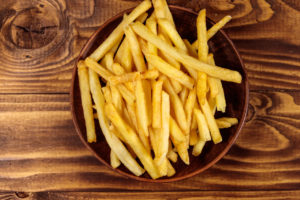
This month we travel to the Great Plains state of North Dakota. It is the 19th largest in area, the 4th smallest by population, and also the 4th most sparely populated of the 50 states. North Dakota is situated near the middle of North America with a stone marker in Rugby, North Dakota marking the “Geographic Center of the North American Continent.”
The western half of the state consists of the hilly Great Plains as well as the northern part of the Badlands, which are to the west of the Missouri River. The region is abundant in fossil fuels including natural gas, crude oil and lignite coal. The Missouri River forms Lake Sakakawea, the third largest artificial lake in the U.S.
The central region of the state is divided into the Drift Prairie and the Missouri Plateau. The eastern part of the state consists of the Red River Valley, the bottom of glacial Lake Agassiz. Its fertile soil, drained by the meandering Red River flowing northward into Lake Winnipeg, supports a large agriculture industry. Devils Lake, the largest natural lake in the state, is also found in the east.
Eastern North Dakota is overall flat; however, there are significant hills and buttes in the western part of the state. Most of the state is covered in grassland; crops cover most of the eastern part of the state but become increasingly sparse in the center and farther west. Natural trees in North Dakota are found usually where there is good drainage, such as the ravines and valley near the Pembina Gorge and Killdeer Mountains, the Turtle Mountains, the hills around Devil’s Lake, in the dunes area of McHenry County in central North Dakota, and along the Sheyenne Valley slopes and the Sheyenne delta. This diverse terrain supports nearly 2,000 species of plants.
The state has a continental climate with hot summers and cold winters. The temperature differences are quite significant because of its far inland position and being in the center of the Northern Hemisphere, with roughly equal distances to the North Pole and the Equator. As such, summers are almost subtropical in nature, but winters are cold enough to ensure plant hardiness is very low.
Business Climate
North Dakota’s earliest industries were fur trading and agriculture. Although less than 10% of the population is employed in the agricultural sector, it remains a major part of the state’s economy. With industrial-scale farming, it ranks 9th in the nation in the value of crops and 18th in total value of agricultural products sold. Large farms generate the most crops. North Dakota has about 90% of its land area in farms with 27,500,000 acres of cropland, the third-largest amount in the nation.
Agriculture is North Dakota’s largest industry today, although petroleum, food processing, and technology are also major industries as well.
The state is the largest producer in the U.S. of many cereal grains, including barley, durum wheat, hard red spring wheat, oats, and combined wheat of all types. The state is the second leading producer of buckwheat. As of 2007, corn became the state’s largest crop produced, although it is only 2% of total U.S. production. North Dakota is the second leading producer of sugarbeets, which are grown mostly in the Red River Valley. The state is also the largest producer of honey, dry edible peas and beans, lentils, and the third-largest producer of potatoes.
The energy industry is also a major contributor to the economy. North Dakota has both coal and oil reserves. Shale gas is also produced. Lignite coal reserves in Western North Dakota are used to generate about 90% of the electricity consumed, and electricity is also exported to nearby states. North Dakota has the second largest lignite coal production in the U.S. However, lignite is the lowest grade of coal.
North Dakota is considered the least visited state in the country because it does not have a major tourist attraction. Nonetheless, tourism is North Dakota’s third largest industry, contributing more than $3 billion to the state’s economy annually. Outdoor attractions like the 144-mile Mah Daah Hey Trail and activities like fishing and hunting attract visitors. The state is known for the Lewis & Clark Trail and being the winter camp of the Corps of Discovery. Areas popular with visitors include Theodore Roosevelt National Park in the western part of the state. The park often exceeds 47,000 visitors each year.
Tax Climate
North Dakota’s individual income tax rates range from 1.1 to 2.9%, which ranks 36th in the nation. The corporate income tax ranges from 1.41 to 4.31%, which ranks 16th in the nation. The state sales tax rate is 5%, which ranks 33rd in the nation. The state allows municipalities to institute local sales taxes and special local taxes, such as the 1.75% supplemental sales tax in Grand Forks.
Other taxes that are of interest to consumers are the gasoline tax and cigarette tax. The state levies a gasoline tax of 23 cents per gallon. State and political subdivisions may obtain a full refund for all motor vehicle fuel used for construction, reconstruction, and maintenance of roads and highways. Emergency medical services operations may also obtain a full refund for motor vehicle fuel used in ambulances. A state cigarette tax of $2.20 is applied per 20-pack.
North Dakota is moderate in its approach to taxation of technology products for sales tax purposes. All digital products are exempt. Prewritten computer software that is electronically downloaded is taxable, while custom computer software that is electronically downloaded is exempt from taxation. Lastly, SaaS is exempt from taxation. How products are produced, sold and delivered is critical to determining its tax status.
Tax Incentives and Credits
North Dakota offers many business tax incentives, corporate tax credits and economic development programs for companies. Here are a few of those incentives:
Workforce Recruitment Credit- An individual, estate, trust, partnership, corporation, or limited liability company is allowed an income tax credit for employing extraordinary recruitment methods to recruit and hire employees for hard-to-fill positions in North Dakota. For more information on this credit, click here.
Seed Capital Investment Tax Credit- An individual, estate, trust, partnership, corporation, or limited liability company is allowed an income tax credit for investing in a business certified by the Department of Commerce Division of Economic Development and Finance. For more information regarding this exemption, click here.
Random Facts
- North Dakota is the leading producer of sunflowers in the United States.
- The state produces enough soybeans to make 483 billion crayons each year.
- The world’s largest French Fry Feed is held every year in Grand Forks, during Potato Bowl USA. A new record was set on September 10, 2015, when 5,220 pounds of French fries were served.
- Explorers William Clark and Meriweather Lewis and the Corps of Discovery spent more time in what is now North Dakota than any other place on their journey.
- North Dakota is home to more wildlife refuges than any other state. Wildlife viewing and birding opportunities are abundant.
- The world’s largest buffalo monument stands tall on the hill in Jamestown, ND. This 26-foot-tall, 60 ton concrete giant has been standing watch over Jamestown since 1959.
Our team at Miles Consulting Group is always available to discuss the specifics of your state tax situation, whether in North Dakota or other states, we can help you navigate the complex tax structures arising from your multistate operations. Call us to help you achieve the best tax efficiencies.



















